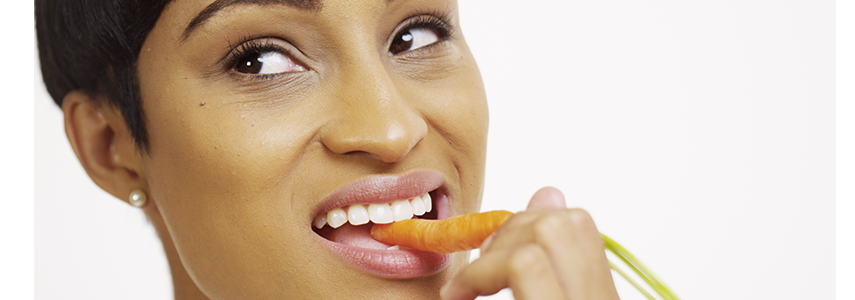Undergoing surgery to insert a dental implant is never an easy choice. Many patients are frightened because they have a phobia of the dentist, others because they are afraid of pain or simply of undergoing a real operation. Pain before and after the operation, competence of the medical staff, quality of the materials that will be used during the operation. These are the main doubts. But not only.
Another source of concern after the insertion of a dental implant may simply be answering the question of what will be possible to put in the mouth after the operation. Which foods can be ingested and which ones should be avoided. In short, which diet should be followed and for how long. Dental implantology with immediate loading of partial or entire arches is a real surgery that modifies the gingival bone anatomy of the patient’s mouth. This means that, at least in the early stages, it will be necessary to adapt to a new condition of the mouth, with one temporary reduced ability to chew. For this reason it is necessary and appropriate to follow some precise indications on recommended foods, those absolutely forbidden or at least strongly not recommended, and some ideas on a food plan to follow.
After the insertion of a dental implant for the first months, about three months if no bone regenerations are necessary, the bone grows around the implants until they integrate inside it. Energetic chewing, therefore, could compromise the success of this process. After this phase, you can go back to eating normally, subject to the authorization of your trusted surgeon.
The three phases after surgery

After the insertion of a dental implant, post-surgery nutrition is usually divided into three phases.
- Phase 1: first 48 hours;
- Phase 2: from the third to the fourteenth day;
- Phase 3: from the 21st day until osseointegration (3 months after surgery).
Phase 1
For the first 48 hours after the insertion of the dental implant, the diet must be cold, semi-liquid. You need to drink plenty of water, freshly squeezed juices, fruit juices (cold or at room temperature) and eat ice cream. Milk, iced or lukewarm tea; fruit yoghurt or drink for breakfast. Fruit smoothies or purees; cup ice cream without lemons, pieces of chocolate or anything else, as a snack and/or snack. At lunch and dinner, on the other hand, you have to be satisfied with vegetable purées or broths with egg stracciatella and Parmesan; mashed potatoes with parmesan; cheese, crescenza, ricotta, homogenized meat or fish; Philadelphia; boiled and lukewarm side dishes (carrots, courgettes, squash, cauliflower, broccoli, spinach).
Phase 2
On the other hand, from the third to the fourteenth day after the insertion of a dental implant, the recommended method of cooking will be boiling, while vegetables and fruit must be puréed or blended and eaten warm. As far as bread is concerned, the hard crust, bruschetta and pizza must be avoided. Consume very cooked pasta and rice, so as to prevent them from sticking to the teeth; prefer small pasta, soup, gnocchi. Avoid steak and particularly stringy meats: choose ground beef to make patties, burgers and meatloaf. Choose vegetables without fiber and cook them well. Avoid hard cheeses. Consume cooked legumes that do not contain hard parts. Avoid raw ham, or at least its fatty part; salami, sausage; therefore prefer turkey or chicken breast and cooked ham. Prefer boiled and previously minced fish. As fruit choose apples, pears, apricots, peaches, plums, bananas, melons, persimmons (all without peel, cooked, blended or pureed). As dessert it is preferable to choose ice creams, sorbets, popsicles, jellies, mousses, creams, puddings, soft cakes without dried fruit, soft biscuits.
Phase 3
From the twenty-first day, from the surgery to insert a dental implant, up to the third month it is possible to go back to eating everything, there will be no particular contraindications, but it will be necessary to pay attention to the consistencies. It will therefore be advisable to avoid important stresses which could create fractures in the temporary prosthesis or which could interfere with the osseointegration process. Space therefore for all foods, checking their hardness. However, you should avoid tearing the food with the two arches and still eating foods with seeds or with parts that could get stuck between the teeth. These precautions are necessary because the osseointegration is being completed and the structure of the temporary teeth does not yet have an anatomy and resistance suitable for a correct masticatory function. It is therefore advisable to introduce chopped and small pieces of food into the mouth, so as to limit the chewing mechanism.
What not to eat and what to avoid after surgery

For the first months after the insertion of a dental implant, foods to tear with the teeth, foods with a stringy or fibrous consistency and foods that are too hard to chew should be avoided. During the first two phases (first 14 days) acidic foods (such as citrus fruits, vinegar, tomatoes, etc.) are to be excluded; hot drinks and foods; spicy foods; alcoholic and carbonated drinks. For the first three months you shouldn’t eat dried fruit; seeds and foods that contain it; baked goods, such as hard bread, focaccia and bread sticks; cereals, muesli, corn flakes; hard tarts and sweets; hard raw fruit; hard raw vegetable; hard biscuits; unminced meat; hard cheeses.
This is a general guideline, a brief guide on what to eat and what to avoid after having a dental implant inserted. In our Sanident dental center in via Settembrini, 6, in Milan, however, our specialists offer all the necessary assistance to our patients in all the phases that accompany, precede and follow the intervention, providing advice and suggestions on how to deal with the better operation.
















